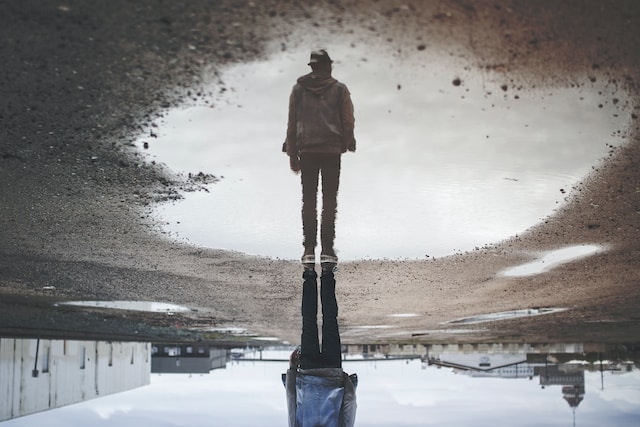In the digital age, social media platforms have become prominent channels for sharing images. However, there is a growing concern regarding the authenticity of these images. The widespread use of image-editing software, particularly Photoshop, has raised questions about the percentage of photoshopped images circulating on social media. This article aims to explore the prevalence of photoshopped images, their impact on society, and provide some tips on how to spot them.

Understanding the Phenomenon
Photoshop is a popular image-editing software developed by Adobe Systems. It allows users to manipulate and alter digital images using various tools and features. Photoshopped images are created for various reasons, primarily driven by personal preferences, societal pressures, and marketing strategies:
- Enhancing appearance: Many individuals alter their photos to present a more idealized version of themselves. This includes retouching skin, whitening teeth, or slimming down body proportions;
- Influencer culture: Influencers often use photoshopped images to adhere to societal beauty standards and gain followers. This can involve creating an illusion of flawless skin, perfect bodies, and staged environments;
- Marketing and advertising: Brands may use photoshopped images to promote their products or services, presenting an unrealistic representation. This can involve altering product features, enhancing colors, or modifying models’ appearances.
Prevalence of Photoshopped Images on Social Media
Several studies have attempted to gauge the extent of photoshopping on social media platforms. While it is challenging to provide an exact percentage, the consensus suggests a significant prevalence:
- A study conducted by the Journal of Media Psychology found that out of 2,500 social media users surveyed, 64% admitted to editing their photos before posting them online;
- Another study by the University of South Australia analyzed over 1,000 Instagram posts and found that approximately 30% of the images displayed clear signs of manipulation;
- A survey conducted by the Dove Self-Esteem Project revealed that 80% of women feel pressure to attain an unrealistic standard of beauty perpetuated by edited images on social media.
Influencers on social media play a crucial role in shaping trends and influencing behavior. Many influencers heavily rely on photoshopped images, which can contribute to unrealistic beauty standards and body image issues among their followers:
- A study published in the International Journal of Eating Disorders found that exposure to images of thin and photoshopped models on social media increased body dissatisfaction and negative mood in women;
- The pressure to achieve unrealistic beauty standards perpetuated by influencers can lead to a variety of psychological issues, including low self-esteem, body dysmorphia, and disordered eating behaviors.
Tips to Spot Photoshopped Images
| Title | Description |
|---|---|
| Inconsistencies in proportions | Look for distorted body proportions, such as elongated limbs or unnaturally slim waists, which can indicate image manipulation. Pay attention to details like bending or warping of objects in the background. |
| Smoothed and blurred edges | Photoshopped images often have excessively smooth and unrealistic edges, particularly around the subject’s face or body. Look for a lack of texture or blurred lines that do not align with natural skin or object characteristics. |
| Lighting and shadow inconsistencies | Observe the lighting and shadows in the image. Inconsistent light sources or misplaced shadows can be a sign of manipulation. Look for shadows that don’t align with the direction of the light source or cast shadows that seem out of place. |
| Unnatural backgrounds | Pay attention to the background elements of the image. Look for signs of inconsistencies or alterations that do not align with the subject. This can include mismatched perspectives, duplicated objects, or missing details. |
Ethical Considerations
- Misleading representations: The prevalence of photoshopped images can contribute to unrealistic expectations and create a distorted perception of beauty, impacting individuals’ self-esteem. It perpetuates an unattainable standard of appearance and promotes comparison and dissatisfaction;
- Responsibility of influencers and brands: Influencers and brands should prioritize authenticity and promote realistic body standards to foster a positive and inclusive social media environment. Encouraging genuine self-expression and diverse representations can help combat the negative effects of photoshopped images.
Conclusion
The prevalence of photoshopped images on social media raises concerns about the impact on society’s perception of beauty and self-image. While it is challenging to determine an exact percentage, studies indicate a significant prevalence. Recognizing the motivations behind photoshopping, understanding the impact of influencers, and being aware of the signs of manipulation can empower individuals to navigate social media with a critical eye and promote a culture of authenticity and body positivity.
FAQs
Not all photoshopping is inherently bad. It can be used for creative purposes, such as digital art or enhancing certain aspects of an image. The concern arises when photoshopped images present misleading representations.
Photoshopping images for personal use is generally legal. However, there are legal ramifications if manipulated images are used for false advertising, defamation, or infringement of copyright. Laws regarding image manipulation can vary between countries.
Currently, there are no specific regulations or guidelines for photoshopped images on social media. However, some countries have implemented laws against false advertising, which can be applicable in certain cases.
